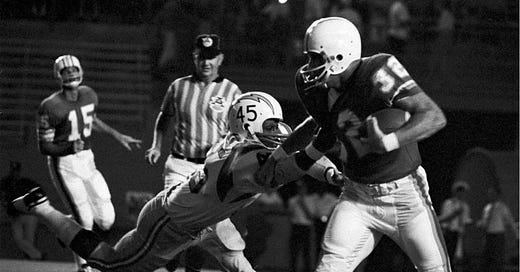As we approach the start of another Miami Dolphin’s season, not many fans realize how close Miami was to losing the Dolphins in 1969. Prior to the hiring of the legendary coach Don Shula, the three straight Super Bowl appearances, and the unforgettable Perfect Season, which the franchise will celebrate its fiftieth anniversary this year, the team was close to leaving Miami for Seattle.
From its inaugural season in 1966 through the 1969 season, results on the field and in the stands were underwhelming. The team experienced losing seasons through each of its first four seasons, with five victories as the high win total for a single season during that stretch. The bigger disappointment were the results at the box office, averaging less than 30,000 fans per game through the team’s first four seasons.
When a Wisconsin businessman acquired the shares of majority owner Danny Thomas, he was more interested in a quick return on his investment rather than a long-term plan that would require patience. The team needed to change fortunes both on the field and at the box office for the new majority owner to view his investment in the Dolphins as a long-term venture. Joe Robbie was unaware of what was coming following the 1968 season, a turbulent time for the founding partner who was committed to keeping the Dolphins in Miami and bringing the city a champion.
Keep reading with a 7-day free trial
Subscribe to Miami History to keep reading this post and get 7 days of free access to the full post archives.





